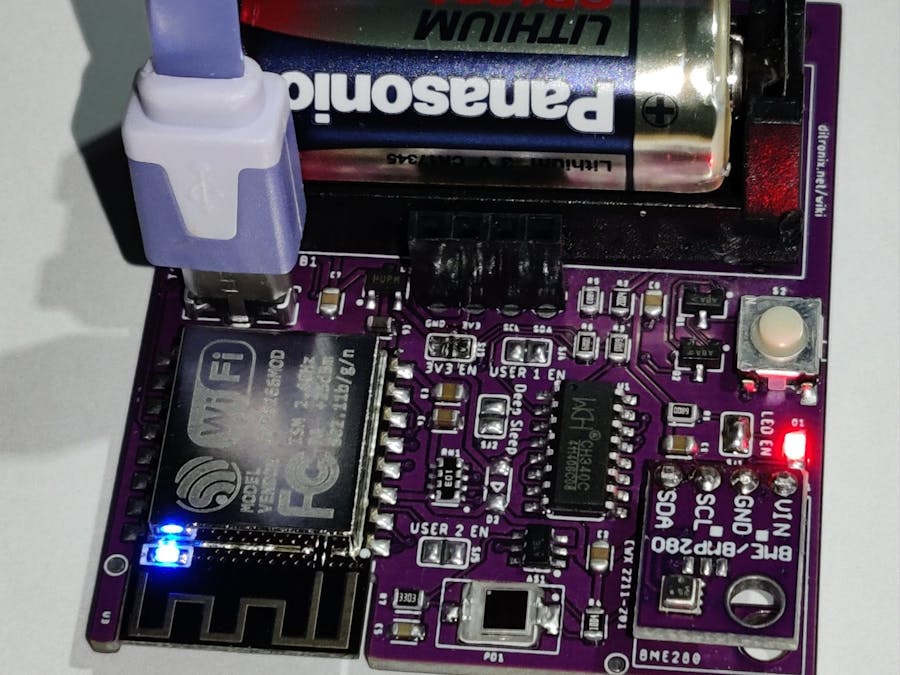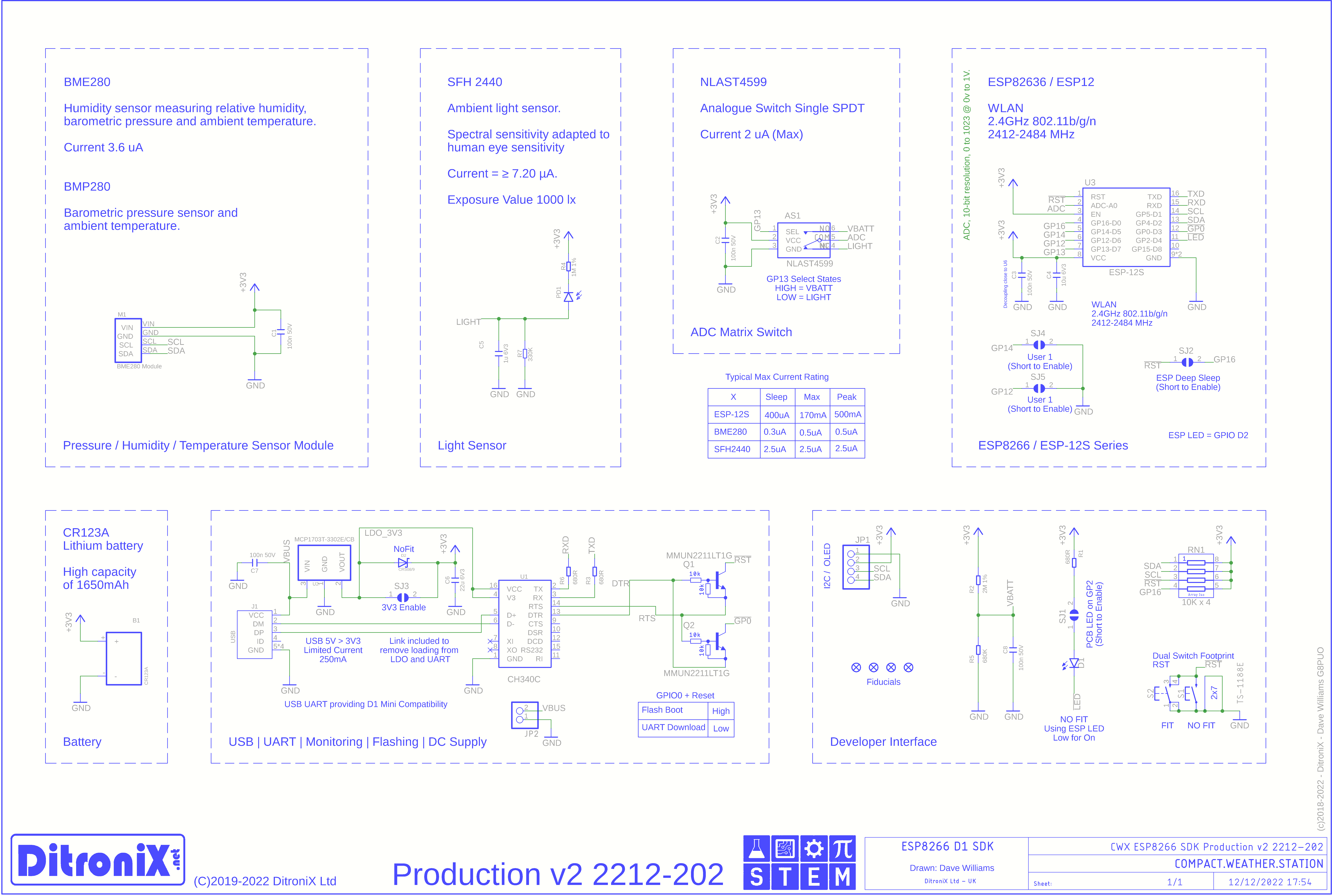This project has been updated https://www.hackster.io/DitroniX/cwx-esp32-c3-portable-compact-weather-station-b04172
Following various interest to additionally offer an 'upgrade' to the original CWX-1, so including Wemos D1 Flashing capability, 3V3 LDO and Battery Voltage Monitoring, the CWX-2 has now been released, and in two flavours!.
CWX-2 is a Compact IoT Weather Station board, based on an ESP8266, which interfaces to a BME280 Weather Sensor and SFH2440 Ambient Light sensor. This board is designed to interface any Home Automation System.
- Designed to be battery powered, via a standard CR123A Lithium Battery, or from an external DC supply.
- Allows remote sensing and sending data over Wi-Fi, such as to Domoticz or another Home Automation system.
- Wemos D1 USB Flashing Compatibility (Includes CH340C and Micro USB)
- The board has also been milled out to fit the BME280 sensor and allow low profile fitting, with air flow.
- The SFH2440 Light Sensor maybe fitted either side, so allowing light to enter from the bottom, through the milled out area.
- An analogue switch has been added to allow instant switching from either the Light Sensor or Battery Voltage Sensor, into the ESP8266 ADC on A0. A GPIO is used to select required input.
- The board is designed to fit into a Waterproof Clear Cover Enclosure, available separately.
Specification
The CWX- 2 specification
- Battery Operated (3V CR123A Lithium) - Can also be USB or 5V Powered
- ESP8266 ESP12S Based
- BME280 to provide a low power (Also supports BMP280, BMP180 etc.)
- Barometric Pressure, 300-1100 hPa
- Temperature, -40 to +85°C
- Humidity, 0-100% Relative (± 3%)
- SFH2440 to provide a high linearity Ambient Light Sensor
- Spectral range of 400 to 690 nm
- Battery Voltage Monitor
- Wemos D1 USB Flashing Compatibility (Includes CH340C and Micro USB)
- On-Board 3V3 LDO Regulator
- Deep Sleep Mode
- Supports 0.6" OLED via on-board I2C header. (Larger OLED I2C Displayed can be used)
- Board 2 Layer FR4, Size only 56mm x 48mm
----------- ----------- ----------- ----------- ----------- ----------- ----------- ----------- ----------- -----------
The CWX-2 is available with and without a BME280 Sensor.
The reason for two flavours. Interest has been shown in the basic battery operated board (but without a BME280 ), for other D1 Compatible projects. This includes options for makers to use sensors such as:
- Air Quality
- Temperature Probes
- Liquid Levels
- Fermentation
- Dangerous Gas Detectors (Methane, LPG, Natural Gas & Coal Gas)
- Infra-Red
- Ultra-Violet
This makes the CWX-2, a great compact board with direct plug-in OLED support.
Other sensors maybe used on the CWX-2, such as shown below with the CWX-1 examples.
Further information, details and examples can be found on our website wiki pages ditronix.net/wiki and github.com/DitroniX
Supporting STEMLife is one long exciting learning curve, help others by setting the seed to knowledge.












_t9PF3orMPd.png?auto=compress%2Cformat&w=40&h=40&fit=fillmax&bg=fff&dpr=2)








Comments